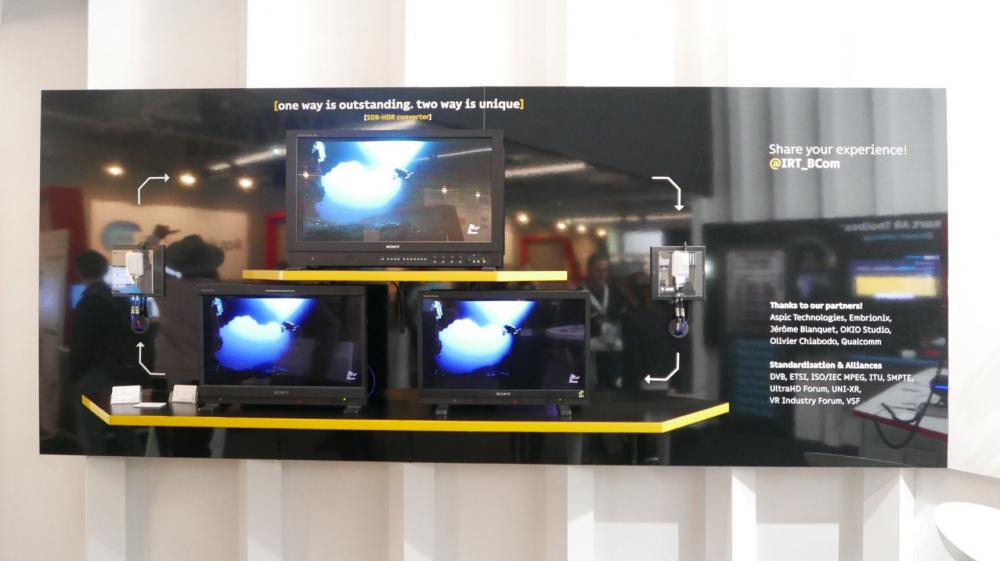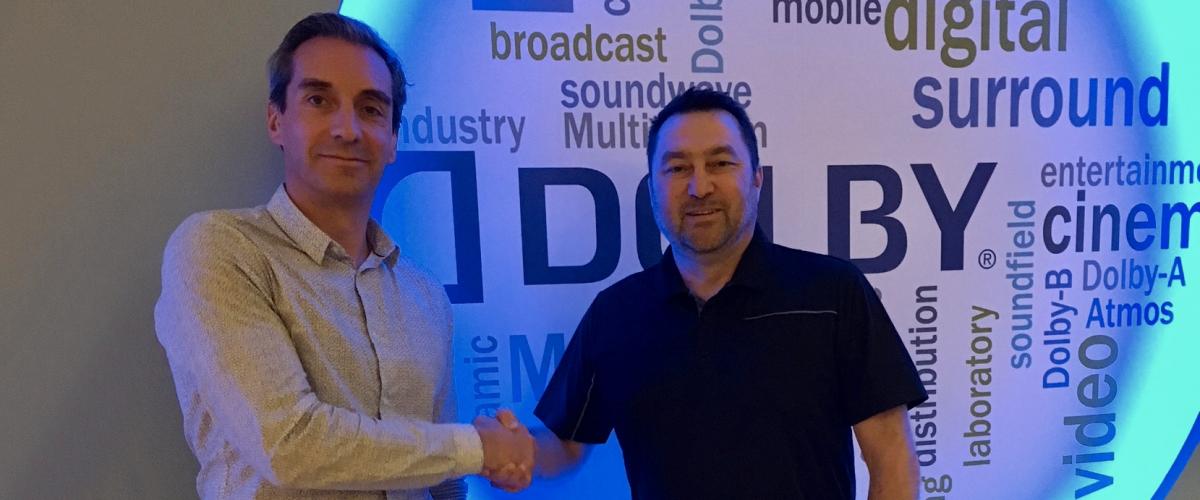High quality HDR is the next frontier for the TV viewing experience. While HDR has become widely adopted for movies and episodic TV content, there is still a need for real-time technology solutions to bring the benefits of HDR, in a cost-effective way, to every home for live TV. This is the main goal of the collaboration between Dolby and b<>com. We talked with Jean-Christophe Morizur, Sr. Director Pro Products and Solutions at Dolby Laboratories and Nicolas Dallery, Director of Sales and Marketing at b<>com, about this collaboration, the successful field trials they completed this fall and what these field trials mean for the industry.
This collaboration for providing the best HDR to SDR conversion solution was first shown at IBC 2018. Can you tell us what was shown?
Jean-Christophe Morizur, Dolby: b<>com’s HDR converter was showcased in the Dolby Vision demo room on the Dolby stand at IBC 2018. Our goal was to show our partners, who are involved in HDR production, that a compelling real-time solution exists in a cost-effective form factor. The demonstrations went well and was very well received by our partners and customers.
What does b<>com's HDR converter do?
Nicolas Dallery, b<>com: Parallel live HDR & SDR productions are cost-prohibitive, so for HDR to become cost-effective and scale there needs to be a means of producing a high quality SDR output from a single HDR production. Solutions currently on the market often use a static LUT to derive the SDR output, which can result in compromises being made in the HDR production to preserve the quality of the SDR output. b<>com offers a dynamic, compact and adaptive mapping solution that produces a high quality SDR output, while requiring fewer compromises in the HDR production. Doing so helps the content producer / distributor eliminate the cost and complexity of supporting a parallel HDR and SDR production. It also allows them to put greater focus on producing great looking HDR without sacrificing the quality of the SDR and thereby provide consumers with a better HDR – and SDR – experience, without compromises.

This fall, you conducted several field trials together. What was the purpose of these trials, and what was the result?
Nicolas Dallery, b<>com: There is never better feedback than that coming from end-users in real world applications. Together with Dolby and major broadcasters, we engaged in several field trials to confirm the value proposition, reliability and performance of b<>com’s technology. Converting from HDR to SDR is a complex task and there is no trivial implementation to do this. Working with some of the most demanding broadcasters, we conducted a considerable number of tests, including several under live production situations. This allowed b<>com to identify corner cases and iteratively tune its technology. We are very satisfied, not only by the enthusiastic feedback we’ve received, but also because we were able to confirm that our technology is solving real problems in a very efficient and cost-effective way and is bringing the value that is expected by broadcasters.
Jean-Christophe Morizur, Dolby: The trials were a way to evaluate the b<>com solution in a real-world setting, providing rapid feedback on how the solution performed, and for vetting that the b<>com technology can be adopted as part of the existing content distribution infrastructure. The goal was to ensure the HDR – and just as importantly the SDR – generated from a live HDR production matched the artistic intent of the live event producers as closely as possible. Key to consumer adoption is providing a consistent experience and ensuring that consumers see the content the way the content creator intended.
What is the relationship between Dolby and b<>com?
Jean-Christophe Morizur, Dolby: As a leader in the HDR ecosystem, Dolby is sharing our years of expertise with b<>com to ensure that the b<>com solution produces the results we believe the industry expects when an HDR production is rendered in SDR. We enjoy working with partners who can address the challenges of HDR production at scale and b<>com has shown this with their HDR to SDR technology.
How do you see the growth and progress of HDR?
Jean-Christophe Morizur, Dolby: Consumer adoption of Dolby Vision and other HDR formats is here, with mainstream TVs, set top boxes, digital media adapters and mobile devices supporting HDR. Episodic and cinematic HDR content is becoming widely available with major platforms like, Amazon, iTunes and Netflix all providing HDR content. One of the next big drivers for HDR growth will be the move by broadcasters and OTT companies around the world to provide their customers with live HDR content. This is particularly true for live sports content. This is clear for broadcasters, as seen by the standardization of HDR transmission systems in major markets, like the US (with ATSC 3.0), Europe (with DVB-T2), and China (with DTMB). And this is also clear for OTT service providers, as seen by the fact that major OTT providers like Tencent in China are beginning to deliver live events in HDR.
Nicolas Dallery, b<>com: Essential standards are in place, end-to-end. The value of HDR is increasingly well understood by both content providers and consumers. Consumer products are now affordable. For live HDR to be commercially viable, a single production workflow that avoids compromising either the HDR or SDR quality at capture is a necessity. Due to the lack of state-of-the-art solutions, the issue of how to transition the network to HDR from legacy SDR remained a technological problem to be solved. This is no longer the case. We will see more and more content providers increasing their HDR offerings in 2019, bringing their customers an incredible viewing experience. A full ecosystem is now in place and there is no doubt that HDR is now on its way to proliferation and commoditization.



